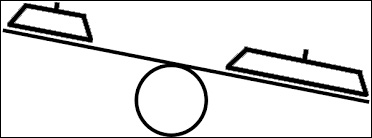
Things come up. Dentist appointments, laundry, you have to take your pet to the vet, all of these things happen. They happen to parliament members too: Even when there’s a proposition being put to vote, sometimes a member of parliament can’t make it (even though it’s their job, for which they’re paid a lot of money, and for which they recently gave themselves a hefty raise in 2016).
Similar to the British parliament, the Swedish parliament has a system called vote equalisation – kvittningssystemet – which means that if a parliament member is absent from a vote, another party’s parliament member’s vote isn’t counted. This way, it is thought, the population’s preference expressed in the last election – represented by the number of parliament seats each party gets – is still properly represented: The parties still have the same weight when voting, relative to each other, even though a member of one of the parties (or heck, many members, even all of them) took the day off.
Sometimes, if how individual members vote is particularly important to one party or another, they can request (in advance) that the vote equalisation system not apply for that vote. One reason for doing this, is that the equalisation system creates a way for parliament members to express their personal opinions and avoid voting on an issue where they disagree with how their party is going to vote. If they’re not there, then they personally didn’t vote for, or against, something (just their party did). If another party sees this as likely to happen, for example, they can ask for the equalisation system to be adjourned for that vote.

One example of this was back in 2015. The Social Democratic party, in power then as now, scheduled a vote on requiring ID checks for people coming in to Sweden on trains, buses and ferries. Many Green party members were very opposed to this, but, they were also members of the government which was proposing it. What to do? One solution is to be sick that day. Or maybe their child is sick that day. Then, the thought goes, they haven’t really voted.
Seeing this opportunity to highlight the divisions in the Green party, and possibly the lameness of taking a powder for the day, the alliance parties (at that time consisting of the Moderate, Center, Liberal and Christian Democratic parties) asked for the vote equalisation system to not apply. This way, the thought went, the Green party members couldn’t be absent. They’d be put on the spot, and made to show their true colors. So awkward.
How did it end? All parliament members had to show up for the vote, doctor’s appointment or not. The Green party members who disagreed with their party still had to show up and vote. The government’s proposal passed, and no member of parliament died because they had to vote that day. What they did have to do, was decide to whom they had greater loyalty – their ideals or the party. So awkward. But also important.
Here’s the thing though. This system worked great (well, that depends on your view) when there were basically two blocks. If a vote on one side was away, a vote on the other side was taken away – tit for tat. The government has always had an opposition. But now, the previous center-right block, the previous alliance, is split. If a Center party member is out for the day, from where do the other votes get taken? Plus, and this is huge, where do the Sweden Democrats and their 17% of seats in parliament go? They aren’t a part of any block, and because of this, haven’t even been a part of the vote equalisation system at all.
In 2018, Anders Ygeman explained it like this: “Several times, they have voted one way in committee and another way in parliament. Sometimes, they’ve voted first for their own proposition, and then for another party’s. I have a hard time seeing how they can be a part of the vote equalisation system.” Jimmy Åkesson, The Sweden Democrats’ party leader, countered, saying that everyone basically knows how the parties are going to vote before the final vote is taken, so equaling isn’t a problem.
It wasn’t solved then, and it isn’t really solved now. Because there are no longer two distinct blocks, there have been some just slightly unusual votes because the vote equalisation system hasn’t worked. In one case, SvD writes, an Center party member was going to be absent so a Social Democratic vote was taken out. But for issues covered by the January Agreement, Center and Social Democrats vote the same way, they aren’t in opposition. For that vote, one side lost two votes while the opposition wasn’t affected at all. The vote result is skewed. Not so democratic.
On issues where the vote isn’t close, the system can survive even if the results don’t exactly reflect party representation. There’s one vote coming up in November, though – the budget – where every vote counts. The seven parties that are currently part of the vote equalisation system are discussing how to make it work. For reasons that seem good to someone, somewhere, the Sweden Democrats’ existence is still being ignored.

The vote equalisation system is supposed to make parliament decisions more democratic, but recent election results and the fraying of the two-block representation are making the system undemocratic. One result may be that presence at voting will be mandatory at all times – sickness, sniffly child, laundry or awkwardness be as they may.
